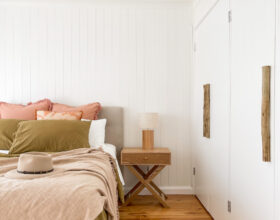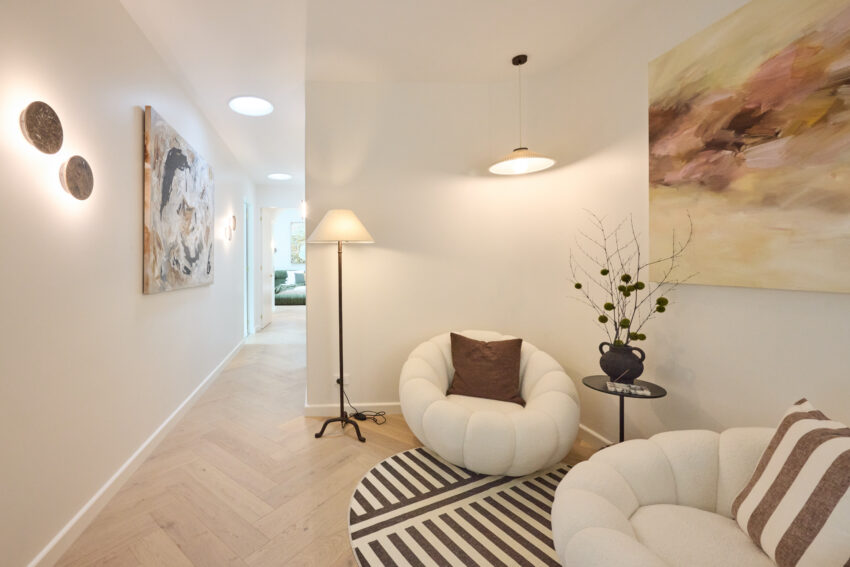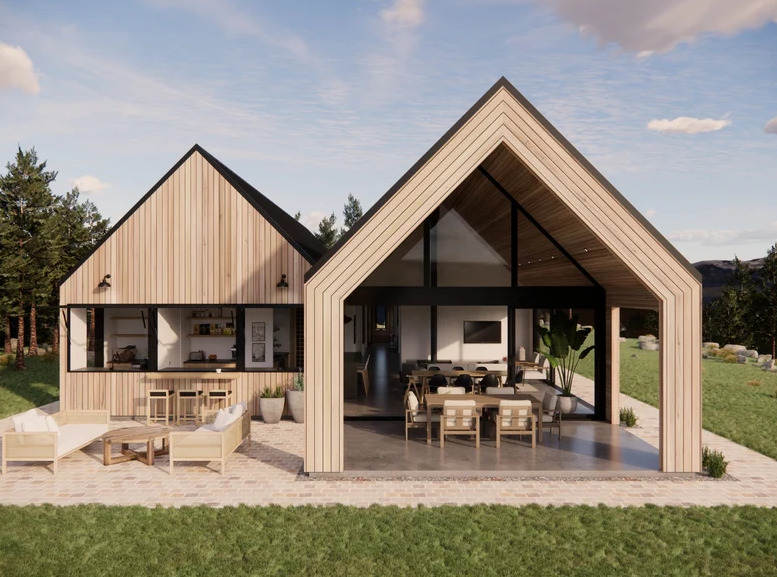Choosing a whole house colour scheme is one of the most important decisions when it comes to interior design. It can make or break the overall look and feel of your home. A consistent colour scheme creates a sense of harmony and flow throughout the space, making it look well put together and intentional. Before …
Choosing a whole house colour scheme is one of the most important decisions when it comes to interior design. It can make or break the overall look and feel of your home. A consistent colour scheme creates a sense of harmony and flow throughout the space, making it look well put together and intentional.
Before you start choosing colours, consider the following steps:
Step 1: Determine your favourite colours. Your home should reflect your personal style and preferences. Identify 2-3 colours that you love and feel comfortable with. Look in your closet, consider your artwork or even your garden, and choose colours that you feel drawn to.
Step 2: Define the mood you want to create. Do you want a calm and peaceful space or a lively and energetic one? The mood you want to create will determine the colour saturation and intensity you choose. Soft pastels and neutral colours convey calmness and relaxation, while bright, bold colours create energy and excitement.
Step 3: Choose a colour palette. Once you have determined your favourite colours and the mood you want to create, it’s time to choose a colour palette. A colour palette is a set of colours that work well together and complement each other. You can use colour wheel or look for inspiration online to find a colour palette that speaks to you.
Step 4: Decide on accent colours. Once you have your main colour palette, you can choose accent colours to add interest and depth to your space. Accent colours should be used sparingly and strategically, to avoid overwhelming the space. Use them to highlight architectural features, artwork, or accessories.
Step 5: Test your colours. Before committing to a colour scheme, test it out in your home. Paint small swatches of the colours you have chosen on the walls and live with them for a few days to see how they look in different lighting conditions. You can also experiment with different textures and finishes to create visual interest.

Here are three common types of colour schemes to consider:
- Monochromatic: This colour scheme uses different shades and tints of a single colour. For example, if you choose blue as your base colour, you can use pale blue, navy blue, and everything in between.
- Analogous: This colour scheme uses colours that are adjacent to each other on the colour wheel. For example, green and blue are analogous colours. This type of colour scheme creates a harmonious and cohesive look.
- Complementary: Complementary colours are opposite each other on the colour wheel. This type of colour scheme creates a vibrant contrast. For example, red and green are complementary colours.
When choosing a whole house colour scheme, start by considering the permanent fixtures in your home, such as kitchen cabinets or flooring. If you are starting from scratch, think about using light neutral colours on your walls to make it easy to change up your decor in the future.
Neutrals can be more than just beige. Consider using grey, which comes in many variations and can be used as a neutral. Warm neutrals include beige, ivory, taupe, nude, sand, and blush, while cool neutrals include white, blue, and grey. Use one or more of these neutral colours as a base, and then choose 1-5 other colours to act as your main accent colours. You can also add a pop of colour by using a saturated accent colour sparingly.

Here are some frequently asked questions about choosing a whole house colour scheme:
- Can I paint my whole house just one colour? Absolutely! In fact, using one colour throughout your home can create a sense of flow and continuity. Just make sure to choose a light neutral colour with minimal undertones to ensure it works in every room.
- Can my trim be different colours? While it’s possible to use different colours for your trim, it’s generally not recommended. Instead, pick a shade of white that works well for trim and casings, and use it consistently throughout your home.
- Can my “pop of colour” change? Yes! Your “pop of colour” should be used sparingly as an accent, making it easy to switch out if you want to change things up. This makes it a great way to add interest and personality to your decor without committing to a bold or permanent change.
In conclusion, choosing a whole house colour scheme is all about finding colours that you love and that work well together. Don’t be afraid to take inspiration from other sources, and remember that there’s no right or wrong answer when it comes to colour – it’s all about finding what works for you and your home.
I also have a FREE paint download you can get here. It’ll tell you what paint goes where.
Be the first to read my stories
Get Inspired by the World of Interior Design
Thank you for subscribing to the newsletter.
Oops. Something went wrong. Please try again later.






